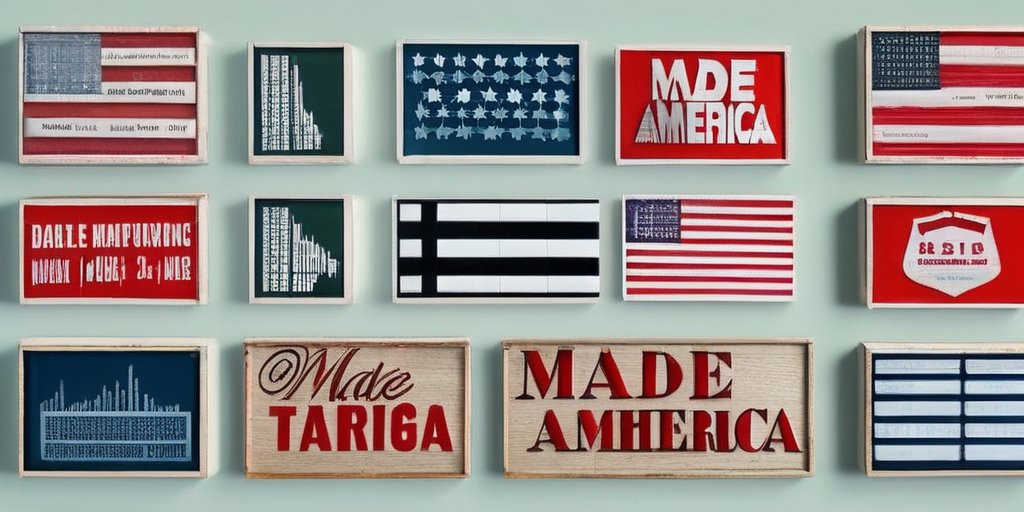President Donald Trump is set to gamble the success of his second term, the economy, and the personal finances of millions of Americans this week on his long-held belief that tariffs can re-create a golden age of US wealth and independence. Or is he? Such is Trump’s capricious leadership that nothing is certain until it happens, and adamant orders — especially on trade — are often reversed as soon as they are given. However, Trump promises that Wednesday, April 2, will be “Liberation Day” — when he imposes reciprocal dollar-for-dollar tariffs on nations that levy duties on US goods.
This could be his most robust move yet to transform the global trading system, potentially affecting every American by raising prices at a time when family budgets are already stretched. The president is implicitly asking everyone to buy into a strategy that promises tantalizing future benefits but requires sacrifice for years to come.
Trump’s trade war policies have already wiped trillions of dollars off stock markets, with the Dow Jones Industrial Average plunging 700 points on Friday alone, heightening fears of a recession as consumer confidence wanes. He’s also alienated US allies as his foreign policy starts to unravel the Western system of alliances. As Wednesday’s deadline approaches, the president is further damaging the confidence necessary for economic stability by raising contradictory expectations, suggesting that some nations or industries may receive opt-outs from the new tariffs. This whiplash leadership style risks as much damage as the policies themselves.
Trump believes that by imposing tariffs on imports, he’ll force firms to relocate manufacturing and supply chains back to the United States, thereby creating jobs and reviving regions left destitute by globalization. The downside, however, is that tariffs will spike prices for consumers already weary of the high cost of living. Furthermore, there’s no guarantee that firms will bring production back to US soil, as such reorientation would take years, potentially outlasting Trump’s presidency.
If the president follows through on his tariff plan, he’ll be taking a huge political risk. His indifference towards potential price hikes, particularly in the automotive sector, illustrates this, as he stated in a recent interview, “I couldn’t care less if they raise prices, because people are going to start buying American-made cars.” Such comments could provoke a political backlash as Republicans grow wary about the electoral impact of a slowing economy.
The 25% auto tariffs set to take effect this week will complicate matters. Manufacturing processes are deeply integrated with plants in Mexico and Canada, meaning most cars built in the US will become more expensive. Although a US-made car might be exempt from tariffs in theory, higher production costs and necessary investments to move manufacturing back into the country will ultimately be passed on to consumers. As new car prices could rise by thousands of dollars, the risk of job cuts in the auto industry looms large.
Trump’s belief in the almost mystical power of tariffs is rooted in his worldview of winners and losers and the idea that the US has long been taken advantage of by foreign powers. However, many economists argue that restrictive trade policies can lead to hardships, as seen during the Great Depression. The post-World War II era saw a gradual reduction of trade barriers, which fostered a more robust global economy. Trump’s tariffs, however, could be a return to such restrictive policies that could cause significant economic turmoil.
Despite Trump’s claims, history shows that tariffs tend to increase prices as the costs are passed down to consumers. This is a significant concern, especially as voters continue to face escalating costs for essential goods. While Trump’s intention to revive economic prospects in areas devastated by factory closures is commendable, the uncertainty created by his leadership style may deter manufacturers from making long-term commitments to relocate operations to the US.
The president’s ambitious approach to trade is both provocative and risky. His reliance on tariffs as a negotiating tool may provide short-term leverage but could destabilize the economy in the long run. Continuing to impose tariffs without a coherent strategy could make a substantial portion of American goods less competitive and drive consumers toward foreign alternatives.
Ultimately, the coming days are likely to be turbulent as President Trump deepens his one-man experiment with the global economy, with many questioning whether the risks are worth the potential rewards.
